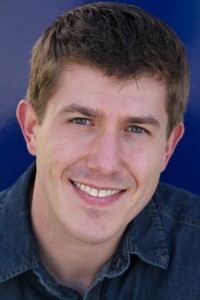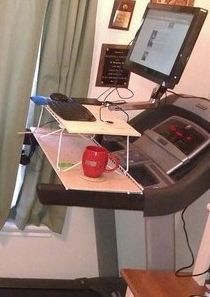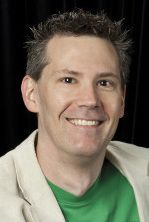I’ve never believed much in writing what you know. If everyone wrote what they knew, we’d have no fantasy or sci-fi. Imagine a world without Narnia or Hogwarts. A life without Lord of the Rings or Game of Thrones.
I consider myself a novel writer. While attending UC-San Diego’s Literature-Writing program, I became part of the departmental honors program during my senior year. I needed a new project, a manageable short story as I only had about four months to get the research, writing, and perfecting all done for the defense.
Most people know about the Tesla car, but not about Tesla, the man. I was first introduced to Nikola Tesla, the inventor, back in 2006, while watching the Christopher Nolan film, The Prestige. Though the Tesla character played by David Bowie (RIP) was only a small part in a film dominated by Christopher Bale and Hugh Jackman’s rival magicians, I was nonetheless enchanted by Bowie’s character.
Trying to brainstorm short story ideas for my senior thesis, I thought again of Bowie’s Tesla and his experiments in Colorado. But by the time I sat for my thesis defense in 2012, my committee and I both concluded that my short story, now grown into a novella, was not even that, but rather a novel.
I finished the first draft of the full-length novel in 2013. It was suggested to me that I go to Colorado Springs and look at the town for myself, to trace what I could find of Tesla’s trail. My research had uncovered little written about Tesla’s time in Colorado Springs. Tesla arrived by train on May 18th, 1899, stayed at the Alta Vista Hotel, ran experiments for roughly eighteen months at his new lab, and left. The lab was later dismantled and the pieces sold to pay Tesla’s debts. I had read everything there was to read about Tesla. I had looked at old maps and drawn from my childhood raised on the Front Range of Colorado to complete the atmosphere. But, my descriptions were lacking a certain authenticity. You couldn’t quite imagine the town yet, picture the clouds of dust rising softly around your feet. And while I couldn’t travel back in time, I could visit the town, 115 years in the future.
Shortly before Christmas 2014, I arrived in Colorado Springs. Like so much of Colorado, Colorado Springs was born of gold fever. The 1859 Pikes Peak gold rush brought the first settlers into the region. In 1871 the town of Fountain Colony was laid out, along with Manitou Springs. In addition to the mining that was done around Colorado Springs, many people came to the area for the health benefits of the dry climate. Fountain Colony would later be renamed Colorado Springs. Colorado itself achieved statehood on August 1st, 1876, and became known as the “bicentennial state”.
My first stop in Colorado Springs was Tesla’s first stop: the train station. The Denver & Rio Grande Railroad Depot was completed in 1887 and remained operational until the late 1960s. The station is not in use today, though it continues to be well-maintained and was even decorated for the Christmas Holiday.
My father used to write non-fiction books, pictorial essays, about the railroad and he always included his own photographs, shot with a traditional film camera. Though I was sporting a several years out of date Canon DSLR, I think I had never felt closer to my father. My young childhood was spent in the back of his green jeep as he and my mother carted me around the western United States, looking for trains to photograph. In addition to the death of his clientele (the old timers who worked on the railroad and still appreciated film photography), the advent of 9/11 made it all, but impossible for him to continue with his books. Where he had so easily been able to walk right up to the tracks and get onto the surrounding hillsides to frame his shots, most access points to the train tracks were now blocked by barbed wire and other deterrents.
But no one is concerned with an empty train depot. I easily creep around the back of the building to take a look at the tracks and the platform. If one could erase the highway overpasses, it is fairly easy to picture the station as it would have been over one hundred years ago. All hustle and bustle with the whine and hiss of steam engines.
Tesla stayed at the Alta Vista Hotel, in Room 222 or 207, depending upon which story you consult. It is said that Tesla selected his room on the premise that the room number was divisible by 3, a prime number. While I had known that the Alta Vista Hotel was long gone, I am not prepared for the surprise of it being completely taken over by a bank with a drive-through. I had been imagining a gaping hole where it had been. As if you could cover up something that vital to the town’s early life.
Around the corner is St. Mary’s Cathedral, one of the buildings I had come to visit more for its age than because it had any actual relevance to Tesla. According to the Church’s website, St. Mary’s was the first Roman Catholic Church in the Pike’s Peak region. More to my interest, the majority of this structure was completed in 1898, the year before Tesla arrived.
It’s a beautiful church, as most churches of a certain age are. St. Mary’s has been well-kept and modernized over the years. Many of the features of the church were embellished or added on later, though the core of the building, the beautiful red brick, has remained the same.
In the downtown area, many of the buildings and streets have retained their original layout. Tejon, Kiowa, Cascade. All names that can be found on historical maps. Many of the buildings bear historic plates, attesting to their age and the sights they have seen.
I drive down Tejon, looking for more buildings from the late nineteenth century. I discover an old day nursery and several wonderful specimens of old Victorian homes. I also find myself near one house that was built in 1902. Tesla’s lab was located outside this downtown area, about a mile behind The Colorado Deaf and Blind School. The school itself had grown from its early days as a single building. I park in the neighborhood across the street from the entrance (a neighborhood also composed entirely of Victorian Homes) and as I get out of the car, I hear a bell tolling the time.
The bell continues to peal as I walk up to the fence outside the school. Here, finally, I can feel Tesla’s ghost again. I have no proof that he ever left his lab and went into town, ever walked into the buildings I’ve just seen. But this school was about the only thing out here besides his lab. He would have been aware of it.
Though most of these buildings weren’t here in 1899, the fact remains that the deaf and blind students who were educated here lived less than a mile from Nikola Tesla.
To find the spot where Tesla’a lab stood, I don’t have to travel far, about a block or two further down. An enormous park takes up the right side of the street as I turn on Foote.
My phone’s GPS dings that I have arrived and I glance around, a little bit confused. There’s no remnant of the lab having ever been here. Residential houses, decorated for the holidays, line both sides of the street. I had known the lab had been entirely dismantled, but I didn’t imagine it would be so completely erased.
I stop in front of the largest house on the street, the one Google has dropped a pin on. A couple comes out of the backyard. They give me a curious look, but don’t ask me what I’m doing. That seems to be the theme of the day. Hardly anyone seems very concerned about me. What a difference from San Diego, where any sort of odd behavior would prompt a question or two.
I head over to the park, where there’s a marker dedicated to Tesla. As I wait for the light, I notice the statue to the fallen firemen on the corner. It’s a little bit ironic that this monument and Tesla’s marker are sharing the same park. After all, during the eighteen months Tesla was in Colorado Springs, his experiments caused at least one grassfire.
The monument to Tesla turns out to be just a plain wooden sign underneath an old tree. Tesla’s trail has officially ended here.
It starts to snow, fat, lazy flakes. It’s a good thing I only want to make one more stop. I need to leave before the storm really hits.
Lowell Elementary is a beautiful, red brick building still in use as a school today. And even more striking is the panoramic view of Pike’s Peak you’re afforded from the front lawn. I grab a few pictures of the school in the snow before admiring the mountain. Wreathed in wispy snow clouds, there’s a glow on Pike’s Peak, as if God was feeling particularly proud of his work and decided to cast a spotlight down on this mountain and all 14,114 feet of its splendor.
I learned a lot from my trip to Colorado Springs. The most important being that I had the layout of the town entirely backwards. From my reading, I had thought the Deaf and Blind School and Tesla’s lab sat in the foothills of Colorado Springs. They actually sit to the east, on the plains. I also discovered that the houses dating from the turn of the century where quite a bit larger than I had envisioned.
Petite by today’s standards as we build our McMansions, but not a shack either. I was also surprised by the use of brick and stone in the architecture. I had been convinced that everything was wood, made to burn.
I think that there’s something to be said about the authenticity, even if it’s not quite writing what you know. As authors we can try to have these crucial experiences. While I’ll never know what it was like to be in Colorado Springs while Nikola Tesla was there, I now know the streets he might have walked, the mountains he saw when he stepped off the train for the first time, the scent of the pine trees rolling off Pike’s Peak, the school he might have gazed at when he stepped outside his lab on a summer morning. We cannot know everything, but we can know what remains to us.
My pictorial diary of that day I spent in Colorado Springs in late December 2014 can be seen here. I am currently seeking representation for my historical fiction novel about Nikola Tesla. If you would like to read more about my writing journey, you can visit my blog at IsleOfBooks.com.
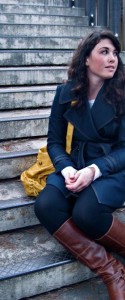 About Shannon Fox:
About Shannon Fox:
I have a B.A. in Literature-Writing from UC-San Diego. While at UCSD, Pulitzer prize-winning poet Rae Armantrout selected my poetry as a runner-up for the 2011 UCSD Stewart Prize in Poetry. Recently, I have worked with Tom Jenks of Narrative Magazine and am currently an Assistant Editor at Narrative. I have co-authored an article published in Scientific American Mind Magazine and was an editorial assistant for Teen 2.0 by Dr. Robert Epstein. I was also a research assistant for the recent book, Against Their Will, by Dober, Hornblum, and Newman. My fiction and poetry has appeared in Black Fox Literary Magazine, The Copperfield Review, The Fat City Review and more. I also have my own blog, Isle of Books, and am a contributing writer to the blogs Mooch Mooch Pets and Coastal Premier Properties.
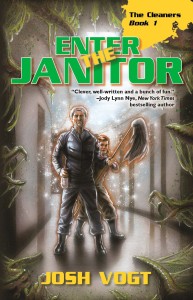 Last year marked the launch of my urban fantasy series, The Cleaners, with Book #1: Enter the Janitor. The novel focuses on two main characters, Ben and Dani, as they work for a supernatural sanitation company dedicated to protecting the world from magical muck and Corruption (yes, with a capital C).
Last year marked the launch of my urban fantasy series, The Cleaners, with Book #1: Enter the Janitor. The novel focuses on two main characters, Ben and Dani, as they work for a supernatural sanitation company dedicated to protecting the world from magical muck and Corruption (yes, with a capital C).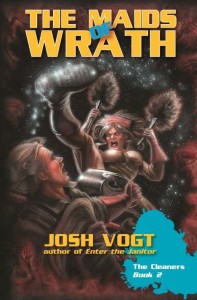 Now, since Enter the Janitor came out, readers have told me how they see parts of themselves, their friends, or family members in Dani’s antics. She’s not just a reader vehicle. She resonates for some. She makes others laugh. She’s even made a few people worry for her sanity. And I look forward to finding new ways for her to surprise not only me, but everyone who might’ve grown the slightest bit fond of this spitfire.
Now, since Enter the Janitor came out, readers have told me how they see parts of themselves, their friends, or family members in Dani’s antics. She’s not just a reader vehicle. She resonates for some. She makes others laugh. She’s even made a few people worry for her sanity. And I look forward to finding new ways for her to surprise not only me, but everyone who might’ve grown the slightest bit fond of this spitfire.
